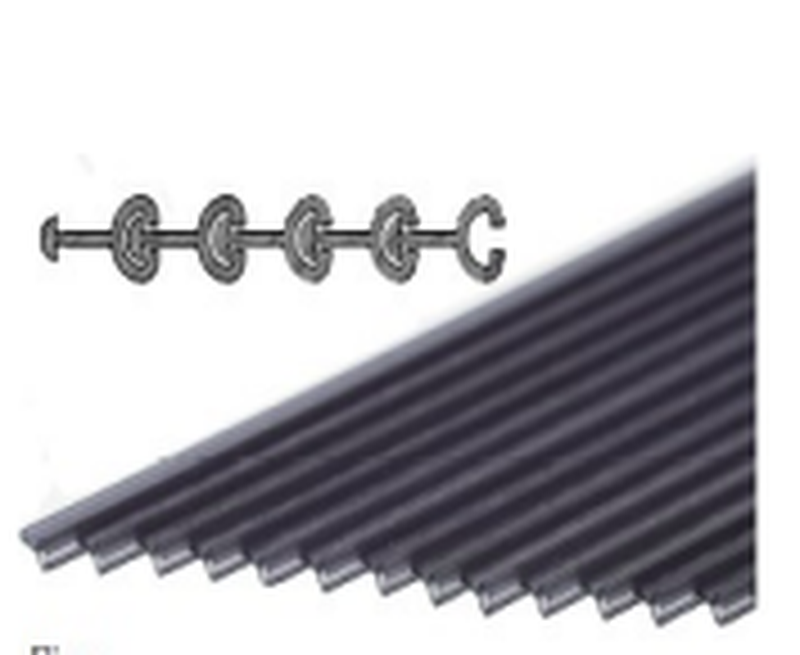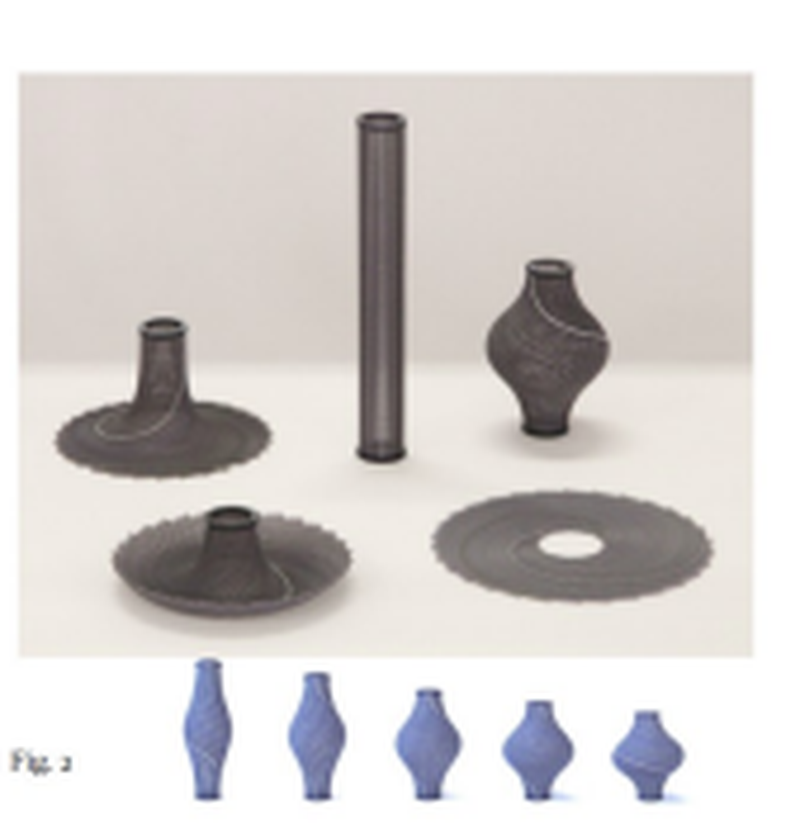Morphing surfaces made of slidable rods. MKT2021/0175_H
Shape morphing surfaces and tubes are used in a wide variety of fields. These include biomedical devices (stents, endoscopes, catheters), soft robotics (artificial muscles, grippers, wearable exoskeletons and active textiles), adaptive/organic architecture or deployable structures in aerospace. Ref. MKT2021/0175_H
Morphing surfaces made of slidable rods. MKT2021/0175_H
Shape morphing surfaces and tubes are used in a wide variety of fields. These include biomedical devices (stents, endoscopes, catheters), soft robotics (artificial muscles, grippers, wearable exoskeletons and active textiles), adaptive/organic architecture or deployable structures in aerospace. Ref: MKT2021/0175_H
El repte/The challenge
All these technologies rely on the straining of the underlying material (e.g. rubber in a pneunet), which is inherently limited, or on rotations of structural elements (as in pantographs, origami or kirigami), which lead to “locking” of the morphing mechanism. Thus, the morphing capacity is limited. Furthermore, each morphable surface system is specifically designed for a specific
morphing program (e.g. deploy a space antenna from tubular to nearly flat or shorten an artificial muscle by inflating a braid), and hence are not versatile in nature. A key challenge in this field is a balance between deformability and controllability. A very soft rubber is very deformable but not controllable. To direct deformation, stiff inclusions such as wires can be introduced, at the cost of reducing the amplitude of morphing. Some pin-jointed structures or origami are very controllable (“1 degree-of-freedom” deployment) but at the expense of very limited morphing versatility.
La tecnologia/The technology
The technology relies on the mechanical concept that by assembling surfaces made out of slidable rods, such surfaces can achieve extreme morphing by sliding the rods non-uniformly. The physical realization of such meta-material is very easy since it only needs a collection of rods with suitable inter-locking geometry made out of any elastic material, see Fig. 1 for 3D
printed rods and their geometry. As such, this technology is scale-free. Such surfaces made of slidable rods can adopt a wide variety of shapes. For instance, an initially straight tube can morph into a flat annulus, a bulged tube, a trumpet, a basket (Fig. 2), a sphere, or a cone (not shown). A mathematical model validated with experiments shows that this single tubular device can adopt essentially any axisymmetric smooth.
Avantatges innovadores/Innovative advantages
- Unlimited local deformation granted by unlimited sliding enables extreme morphing.
- As opposed to sparse pin-jointed or braided structures, this technology provides a continuous envelope with tunable porosity.
- In stent applications, a continuous envelope reduces the stress concentrations and tissue
damage - In space antennae or solar sail applications, our continuous tubular structures can be efficiently packed in a space-craft to be later deployed into nearly planar or curved shapes.
- In tubular devices made with our technology with a pneumatic chamber, shortening can be coupled to rotation, enabling simple rotational artificial muscles, which with current McKibben muscles require complex assemblies.
- A single mechanism can implement bending and inflation of tubular devices
- Functional morphing is accompanied by an aesthetically appealing change of helicity of the rods on the surface. (the basket in Fig. 2 flipped upside down).
- Shape can be programmed by suitably controlling the mechanical properties of the constituent rods, for instance using their geometry
Fase actual de desenvolupament/Current stage of development
Aplicacions i mercat objectiu/Applications and target market
We envision three different fields of application: Soft robotic/biomedical devices, Design and architecture and Space deployable structures.


Oportunitats de negoci/Business opportunity
Tecnologia disponible per a ser llicenciada amb cooperació tècnica/Technology available to be licensed with technical cooperation
Estat de la propietat intel·lectual i industrial/Intelectual property status
No possibilitat de patent/Not possibility of patent
Contacte/Contact
Servei de Gestió de la Innovació
T. +34 934 13 76 23
gestio.innovacio@upc.edu